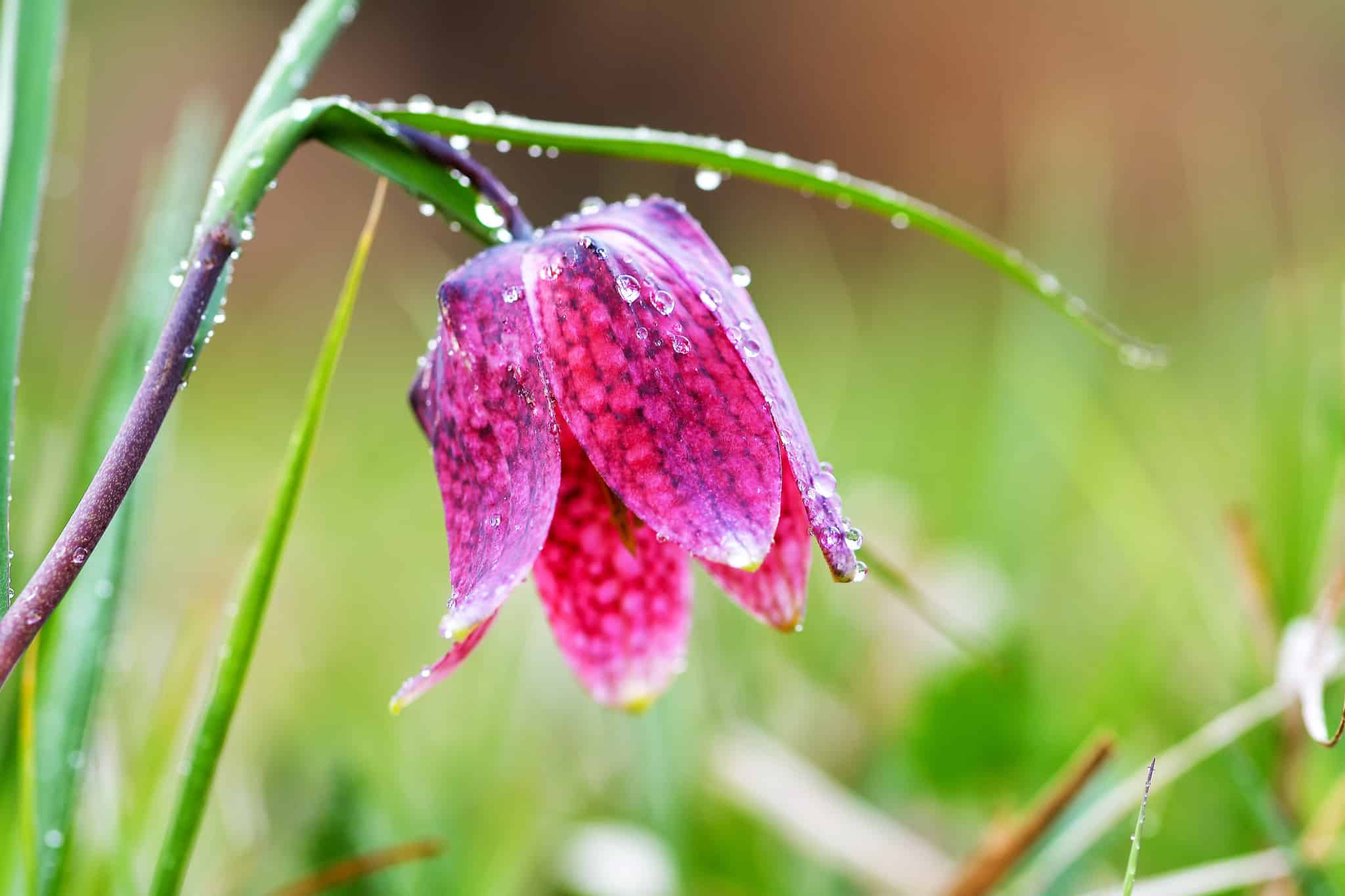Magnificent May brings with it a host of new growth and so it’s the perfect month to cultivate a miniature wildflower meadow in your back garden. For a plot that’s popping with colour, let’s peruse which flowers are best to plant together in order to encourage a hive of activity for honey-gathering friends.
Fritillaria meleagris (snake’s head fritillary)
Delicate Fritillaria Meleagris, otherwise known as snake’s head fritillary or chequered daffodil, will add a touch of vibrancy to your garden. Their varying purple and white colouring makes them even more special for a spring time display. These distinctive checkerboard markings will add subtle flashes of colour to any green space when peppered about the garden.
The pendent shaped flower heads add a touch of drama to any border or grassy setting. They’re perfect woodland additions and have such delicate stems that they are so named because the nodding flower head is said to resemble a snake.
Being native to damp meadows, like hay meadows, as their natural habitat they grow best in moist soil. I would suggest adding in some leaf mould to help nurture the flower steadily throughout its growth. It will also aid in retaining the moisture of your soil which is vital for this flower to flourish. They typically grow to 30cm by 8cm so planting them in the autumn months from September to November with other late bloomers such as Narcissus (daffodil) will allow for a full blossom in spring.
Hyacinthoides non-scripta (English bluebell)
More prevalent than the Fritillaria meleagris, but still just as wild, the English bluebell is a vital flower for attracting bees in spring. Coming across them naturally in the wild is becoming more infrequent.
In 2015, they were voted Britain’s favourite wildflower and it’s not hard to see why as they possess a lot of useful qualities for your garden, are easy to grow in trickier spots and spread quickly.
Plant in moist well drained soil during September and they will bloom early, producing a subtle, yet distinctive scent akin to honey. They can equally be planted under trees—a great way to entice not only bees, but butterflies and hoverflies too.
Or coat a patch of lawn in glorious shades of blues and violets. Once purchased, plant straight away to avoid decay as the bluebell bulbs are vulnerable to this when not in soil.
Primula vulgaris (primrose)
Primula vulgaris possess sweetheart shaped petals in subtle shades of white, pink and pale yellows. Their Latin name is derived from ‘Primula’, meaning ‘first’, which is symbolised in their early spring bloom. Whereas, ‘Vulgaris’ translated means ‘common’ and they are one of the more frequent wildflowers seen across Britain. The common primrose will display a bold yellow centre similar to that of an egg yolk, contrasting to the creamier shade on the outer part of its petals.
With its sweet scent, primrose is great for enticing night moths as well as bees. Night moths are actually contribute to their pollination—providing a similar service feeding on the nectar of the flower and helping to disperse pollen.
Common primrose cultivars have the ability to self-pollinate, but it’s always a great to plant with the aim to attract these helpful insects around the garden.
More of an early spring bloomer, with their brilliant bright yellows, they will be the first to add a burst of sunshine to your back garden. Scatter the seeds onto the surface of your compost during mid-September to October with some added leaf mould to retain moisture.
So, there you have my top 3 pollen producing plants of May to help repopulate the ever-decreasing wild and wonderous wildflowers of Britain, whilst inviting a flurry of beneficial wildlife to your gardening experience.



Leave A Comment